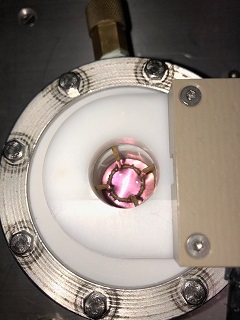17O(p,γ)18F
P.I.: Giovanni Ciani, Denise Piatti
Astrophysical Motivation
Among proton capture reactions of astrophysical interest, the 17O(p,γ)18F reaction (Q= 5607 keV) plays a crucial role in AGB nucleosynthesis as well as in explosive hydrogen burning occurring in type Ia novae. At temperature of interest for the former scenario (20 MK < T < 80 MK) the main contribution to the astrophysical reaction rate comes from the Ecm = 65 keV resonance.
Experimental Aims
Recent measurements of the 17O(p,γ)18F reaction have been performed at LUNA using both the prompt γ-ray detection and the activation method. These led to a precise determination of the Ecm = 183keV resonance strength, while a direct measurement of the Ecm = 65keV resonance strength remained prohibitive because of background and efficiency limitations. After an improvement of the setup, the challenge of LUNA will be to perform the first direct measurement of the resonance strength at low energy.
Experimental setup
This reaction is being measured at the solid target station of LUNA 400. Due to the really low reaction yield expected, data are taken with a high-efficiency 4π BGO summing crystal. For a further environmental background reduction, the setup is shielded by a lead layer surrounded by a 2 inches borated polyethylene coating that reduce neutron capture processes in the BGO detector.
Targets are anodised tantalum backings using highly enriched O-17 water.


